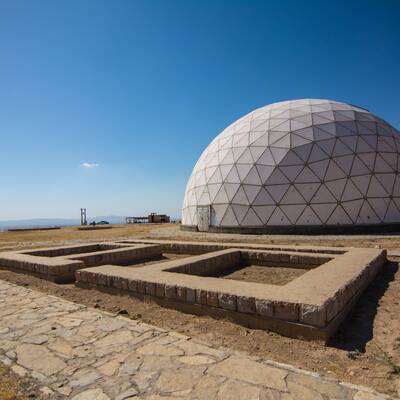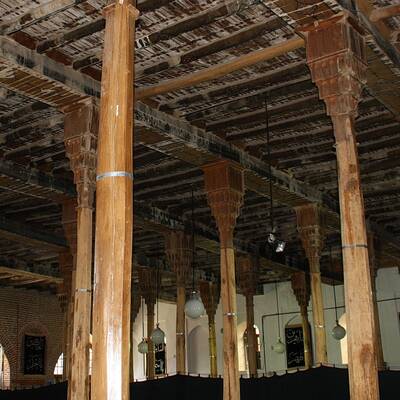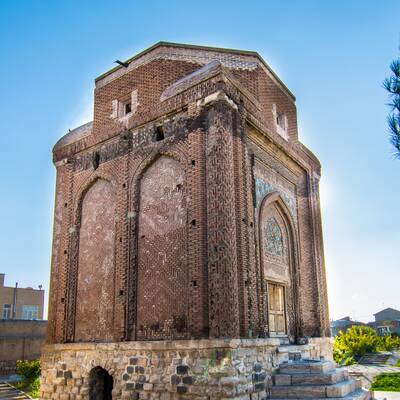
Maragheh Observatory
MaraghehMaragheh Observatory was one of the largest and most famous Islamic observatory in the world with great observational instruments of high precision, related to the period before the telescope was invented. The building was founded by Khawaja Nasir-e-Din Tusi order, the philosopher, mathematician and the great astronomer of the Illkhani and the command of Holaku khan on a hill in West Maragheh.
The Illkhani famous horoscope (meaning to determine the position of stars and the quality of their movements) is also provided at this location. There are 17 architectural units on the observatory hill one of them is related to the installation after the destruction of the observatory and the rest are units constituting Maragheh scientific complex beside each other.
There various parts in this complex: observatory central towers and dependent astronomical units, the interior space of this cylindrical tower consisting of a corridor and six rooms in which there are four non-geometric rectangular halls and two other rooms in the north and south, five round units around the tower each of them directly used in astronomical research, school for training the young researchers in various fields such as astronomy, light, mathematics, physics and geometry, the library containing 4,000 books, accommodation of professors and researchers, casting workshop in this complex.
The materials used in tower are contained stones, rubble stone, carved stone for external and internal facade, large carved stones for entrance, brick towers in three different sizes, mortar and stucco, large glazed tiles in three different designs and types, carved and decorative stones and decorative brick.
Unfortunately, only the foundation of observatory various parts and a part of stone's Sextant remained. The dome has been built above in recent years to protect the remnants of this valuable complex.

.jpg)

